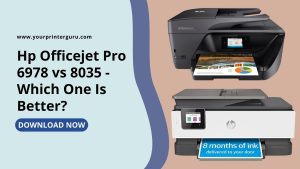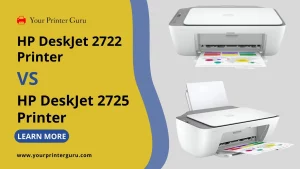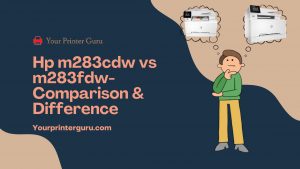The Epson 2400 and 2800 printers, both belonging to Epson’s inkjet category, offer distinct features that set them apart. The differentiation between these two Epson printer models can be based on specific features like sheet capacity, touch displays, and scanning capabilities. Nonetheless, they also share a considerable number of similar features. In this article, we will try to figure out the best among them.
Epson Ecotank 2400 Vs 2800 Specs
| Specification | Epson ET-2800 | Epson ET-2400 |
|---|---|---|
| Printing Technology | Inkjet | Inkjet |
| Functions | Print, Copy, Scan | Print, Copy, Scan |
| Print Speed | Up to 10 ppm (Black) / Up to 5 ppm (Colour) | Up to 10 ppm (Black) / Up to 5 ppm (Colour) |
| Print Resolution | Up to 1440×5760 dpi | Up to 1440×5760 dpi |
| Ink Type | Eco Tank Ink Bottles | Eco Tank Ink Bottles |
| Ink Colours | CMYK (Cyan, Magenta, Yellow, Black) | CMYK (Cyan, Magenta, Yellow, Black) |
| Connectivity | USB, Wi-Fi, Ethernet | USB, Wi-Fi, Ethernet |
| Paper Tray Capacity | 100 sheets | 30 sheets |
| Scanner Type | Flatbed | Flatbed |
| Scanner Resolution | Up to 1200×2400 dpi | Up to 1200×2400 dpi |
| Duplex Scanning | Yes | Manual |
| Duplex Printing | Manual | Manual |
| Display | 1.44 inch | No |
| Mobile Printing | Epson Connect, Apple Air Print, MacOS, Cathlina | Epson Connect, Apple Air Print, MacOS |
| Dimensions (W x D x H) | 14.8 x 22.8 x 10 inches | 22.8 x 14.8 x 10 inches |
| Weight | 12.41 pounds | 8.6 pounds |
Epson Ecotank 2400 Vs 2800 Comparison in Detail
Epson Ecotank 2400
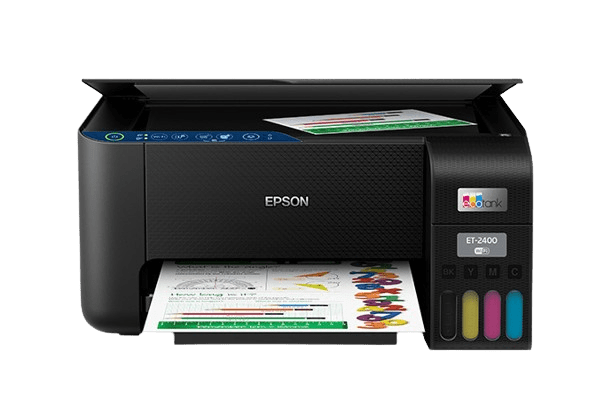
Epson Ecotank 2800
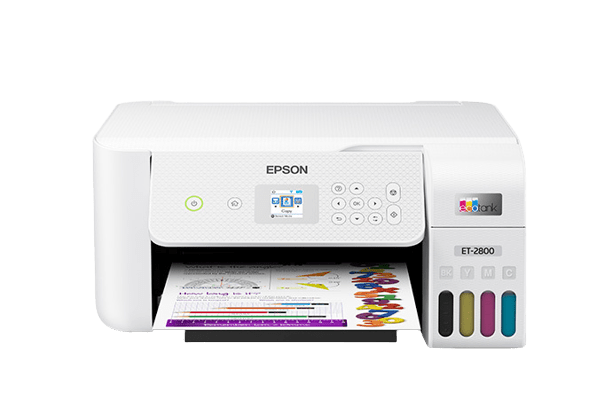
Design and Build quality
In the comparison between the Epson 2400 and 2800 printers, the presence of a display LCD panel emerges as the most significant distinction. The Epson 2800, with its incorporated 1.44-inch display screen, sets itself apart, contributing to a slightly higher price compared to the Epson 2400, which lacks this feature.
The Epson ET-2800 exhibits a robust plastic body, showcasing a sturdy build without any audible creaks or squeaks from its movable components. The input connections also exude durability and reliability. However, the absence of a display panel in the Epson 2400 doesn’t diminish its utility. This model still encompasses top-notch and advanced features, enabling users to perform exceptional printing tasks swiftly, accurately, and with precision.
Printing quality and speed
Both printers share a similarity in their printing size capabilities. They offer a maximum print size of 8.5×14 inches, showcasing their equal potential in producing designs within this size range. Additionally, their resolution remains consistent at 5760×1440 dots per inch, ensuring the creation of high-quality, versatile, and vibrant images.
The printing speed of both the Epson 2800 printers is relatively slow across various tasks. Printing extensive documents such as reports or colored worksheets might require a considerable amount of time. Similarly, printing standard photos takes notably longer compared to most inkjet printers. Both the Epson 2400 and 2800 have the same printing speed of 10 ppm ( b/w) and 5 ppm (colour).
Ink capacity
Regarding inks and paper, both Epson printers utilize the standard four sublimation ink colours (CMYK). These inks are easily refillable once they are depleted in the printers and scanners. The paper capacity of these printers typically accommodates around 300 paper pages, providing users with ample storage for their printing needs.
Page yields and cost
The ink tank of the Epson Eco Tank ET-2400 impressively produces a high volume of prints, reducing the frequency of refills, particularly for heavy print users. Both the Epson 2800 and 2400 give the same page yields of 4500 black pages and 7500 colored pages.
Although the specific reason for this discrepancy remains unclear, this attribute benefits individuals frequently printing blues, such as graphic designers adhering to a specific colour scheme or casual photographers specializing in landscape images featuring ample sky or ocean. The Epson ET-2800 boasts an excellent cost-per-print ratio, attributed to its refillable ink tanks with high yields and cost-effective ink.
Scanning and copying
The scanning capabilities of the Epson Eco Tank ET-2400 are limited, featuring solely a flatbed scanner. Scanning extensive multi-page documents can be arduous and time-consuming due to this restriction. Although the Epson 2400 has a simplex scanning speed of 8.5 ppm ( b/w) and 5.5 ppm ( colour).
On the other hand, the Epson 2800 printer also incorporates a flatbed scanner with duplex scanner with a better scanning speed of 15 ppm ( black and white) and 12 ppm ( colour). Also both the printers have almost the same copying speed of 10 cpm ( b/w) and 5 cpm ( color).
Connectivity features
Both printers provide convenient connectivity options, such as Wi-Fi for wireless printing from various devices. Moreover, they come equipped with USB ports, allowing direct printing and scanning. Furthermore, their Ethernet functionality facilitates mobile printing and simple management via smartphones or tablets.
Conclusion
The comparison between the Epson 2400 and 2800 printers reveals several similarities in their features. However, the key distinguishing factors lie in their pricing and display functionalities. When considering a choice for your printing business, our recommendation leans towards the Epson 2800 printer, not only for its display and light weight but also it has superb connectivity features.

